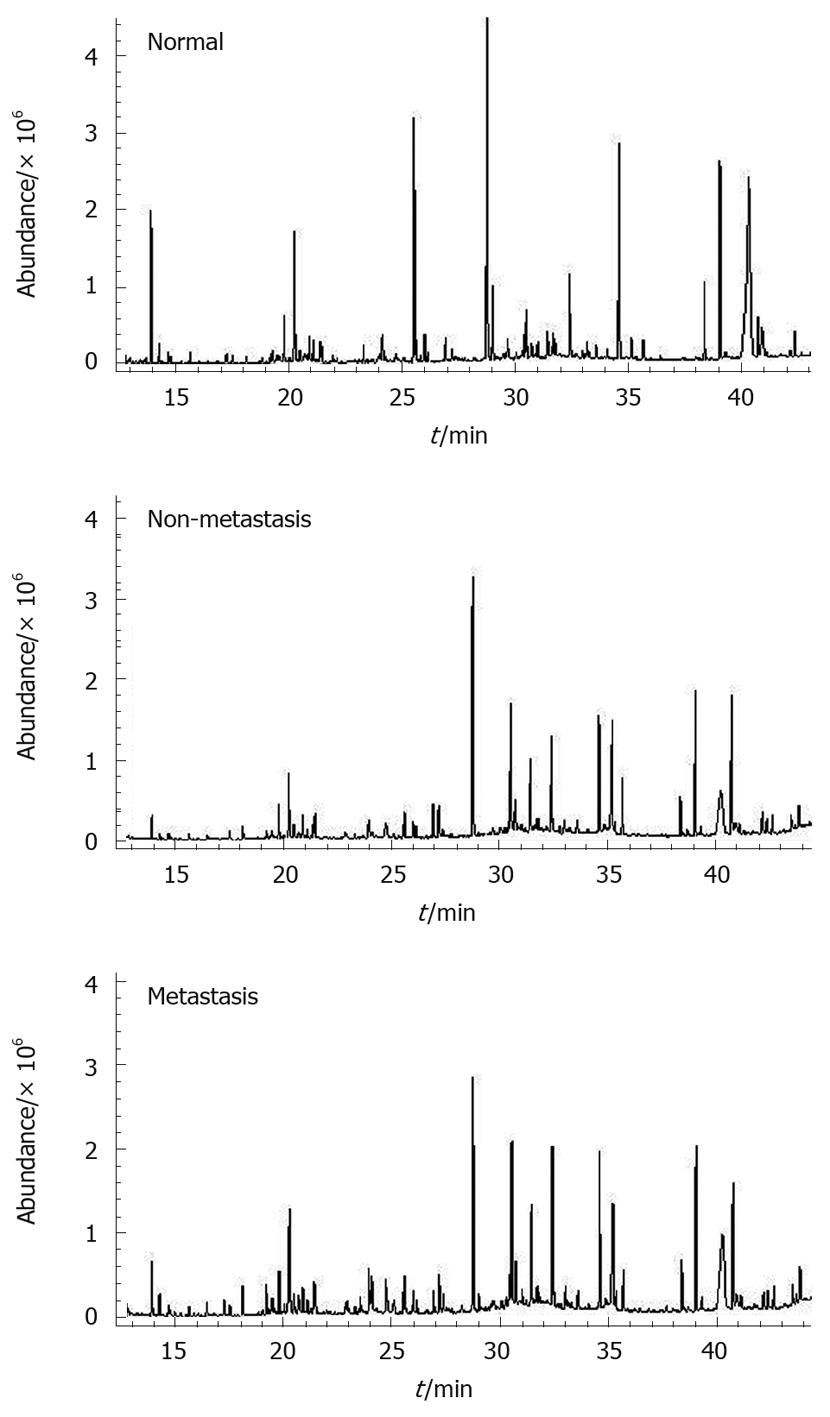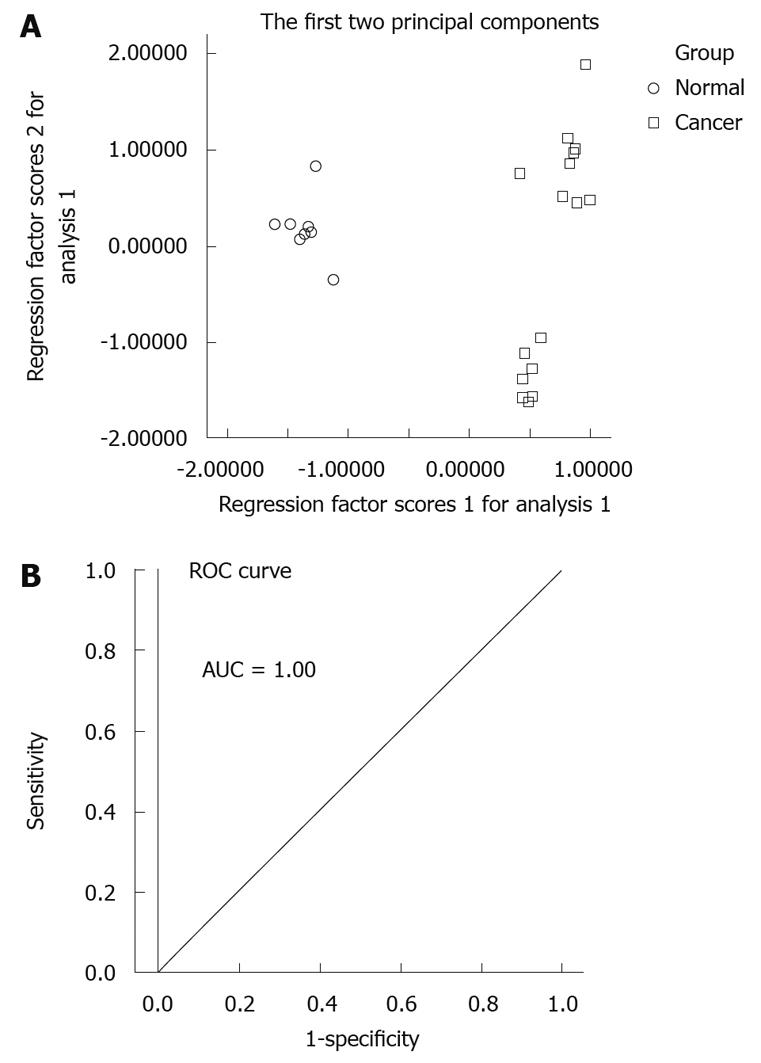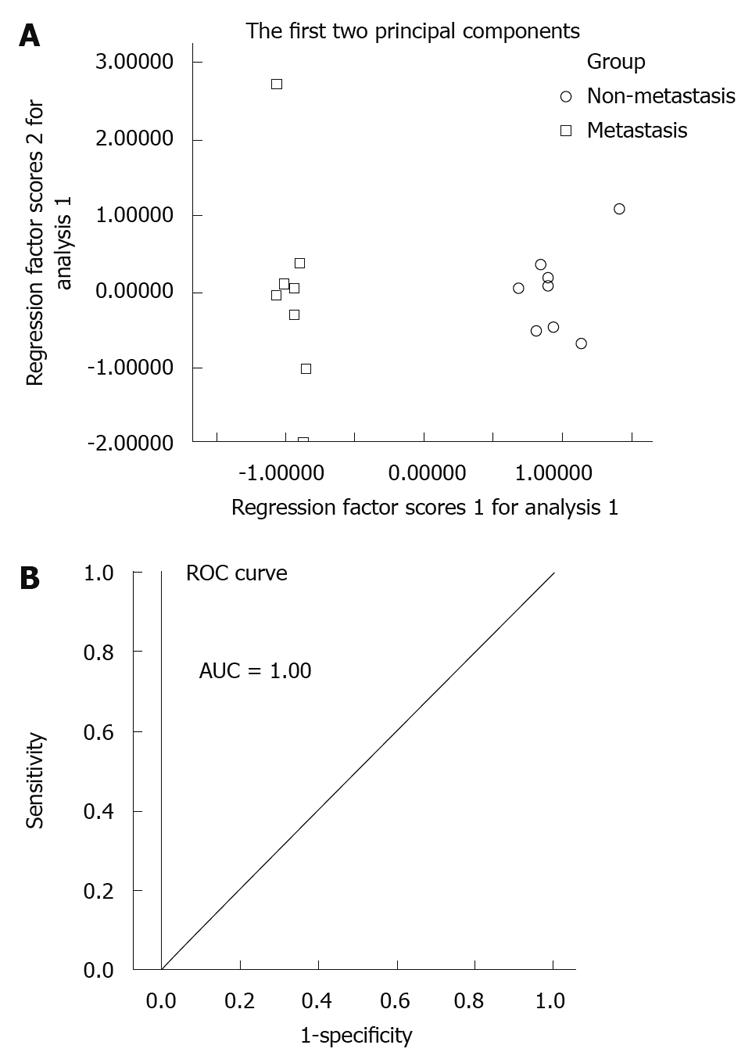Copyright
©2011 Baishideng Publishing Group Co.
World J Gastroenterol. Feb 14, 2011; 17(6): 727-734
Published online Feb 14, 2011. doi: 10.3748/wjg.v17.i6.727
Published online Feb 14, 2011. doi: 10.3748/wjg.v17.i6.727
Figure 1 Gastric cancer pathological photographs.
A: Gastric cancer cells in mice of the non-metastatic group (HE stain, × 200); B: Gastric cancer metastasis in the liver (HE stain, × 200).
Figure 2 Representative gas chromatography/mass spectrometry total ion chromatograms of the samples from the three groups (normal group, non-metastasis group and metastasis group) after chemical derivatization.
Figure 3 The overlay chromatograms of three parallel samples.
A: The total ion chromatograms (TICs) of gas chromatography/mass spectrometry analysis; B: Enlarged part of TIC from 28 to 36 min; C: One peak enlarged.
Figure 4 Principal component analysis model and receiver operating characteristic curve for gastric cancer.
A: Principal component analysis (PCA) scores plot of gastric tumor specimens from control specimens based on 10 marker metabolites. The PCA scores plot showed different samples (normal group, cancer group including non-metastasis group and metastasis group) were scattered into different regions; B: Receiver operating characteristic (ROC) analysis was performed using the values determined by the first two components. Area under the curve (AUC) = 1.00.
Figure 5 Principal component analysis model and receiver operating characteristic curve for gastric cancer metastasis.
A: Principal component analysis (PCA) scores plot of non-metastasis group and metastasis group based on 7 marker metabolites. The PCA scores plot showed the samples from non-metastasis group and metastasis group were scattered into two different regions; B: Receiver operating characteristic (ROC) analysis was performed using the values determined by the first two components. Area under the curve (AUC) = 1.00.
- Citation: Hu JD, Tang HQ, Zhang Q, Fan J, Hong J, Gu JZ, Chen JL. Prediction of gastric cancer metastasis through urinary metabolomic investigation using GC/MS. World J Gastroenterol 2011; 17(6): 727-734
- URL: https://www.wjgnet.com/1007-9327/full/v17/i6/727.htm
- DOI: https://dx.doi.org/10.3748/wjg.v17.i6.727













